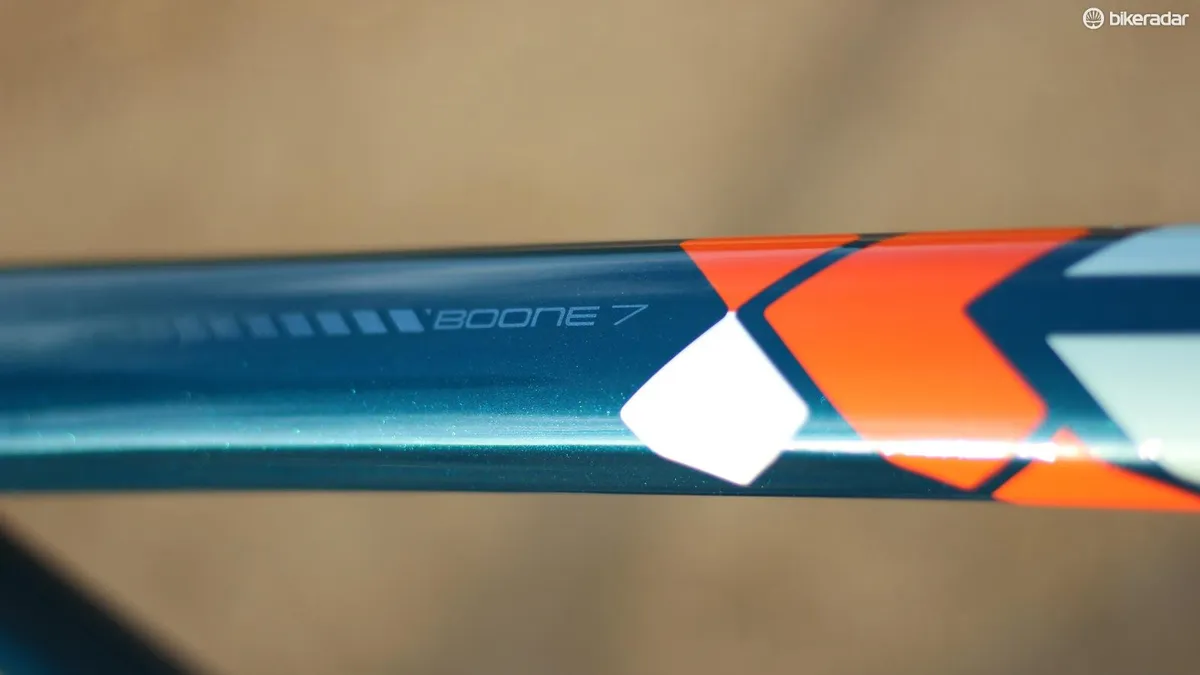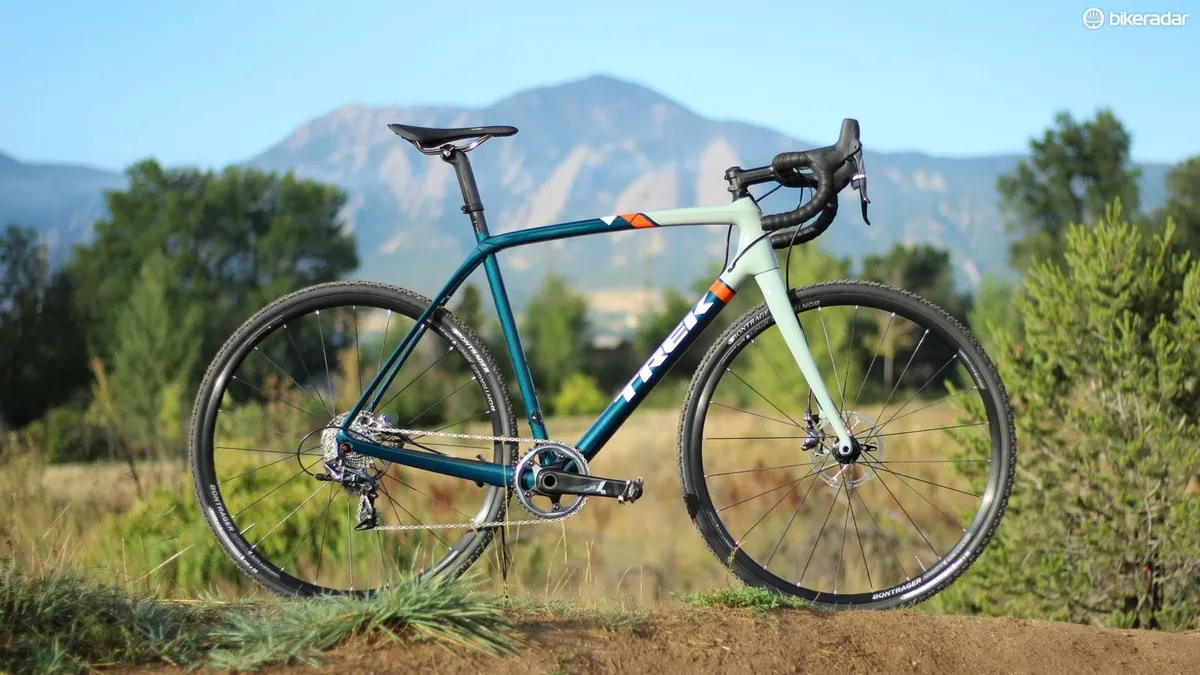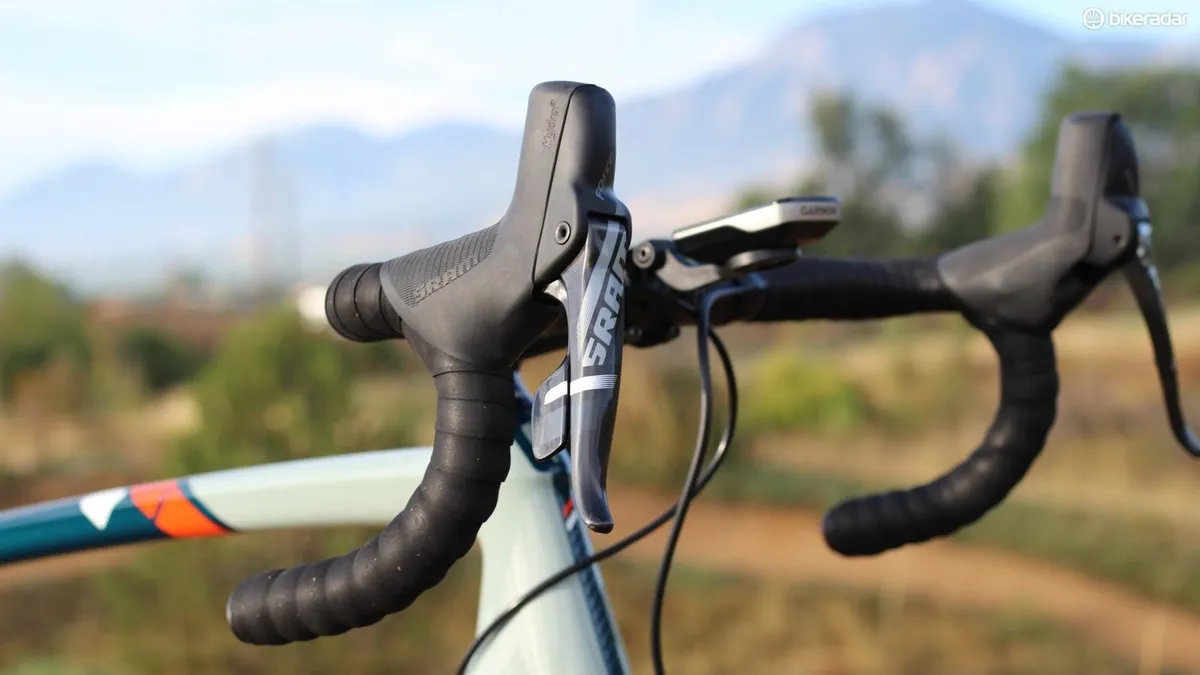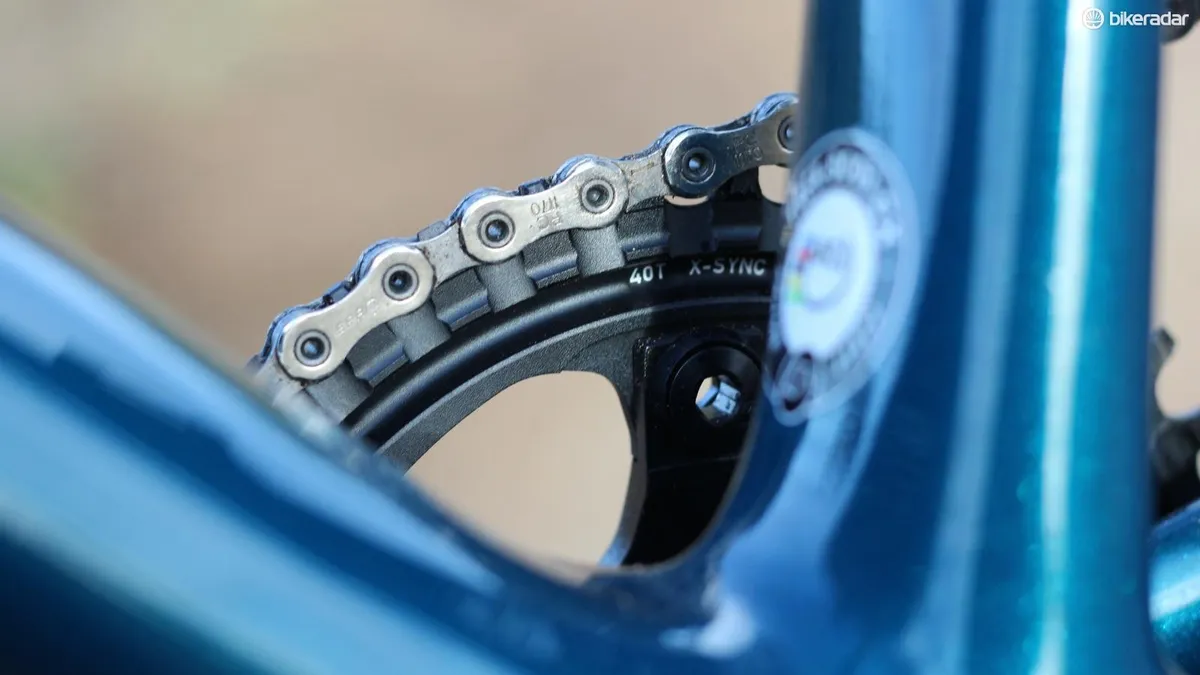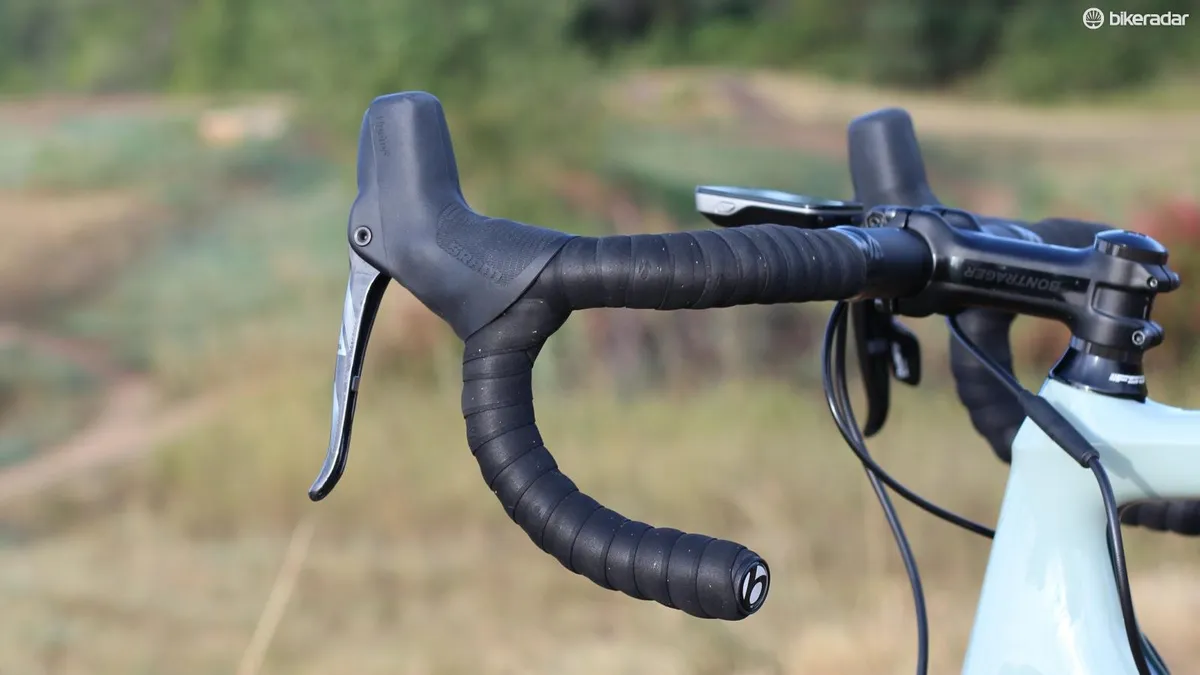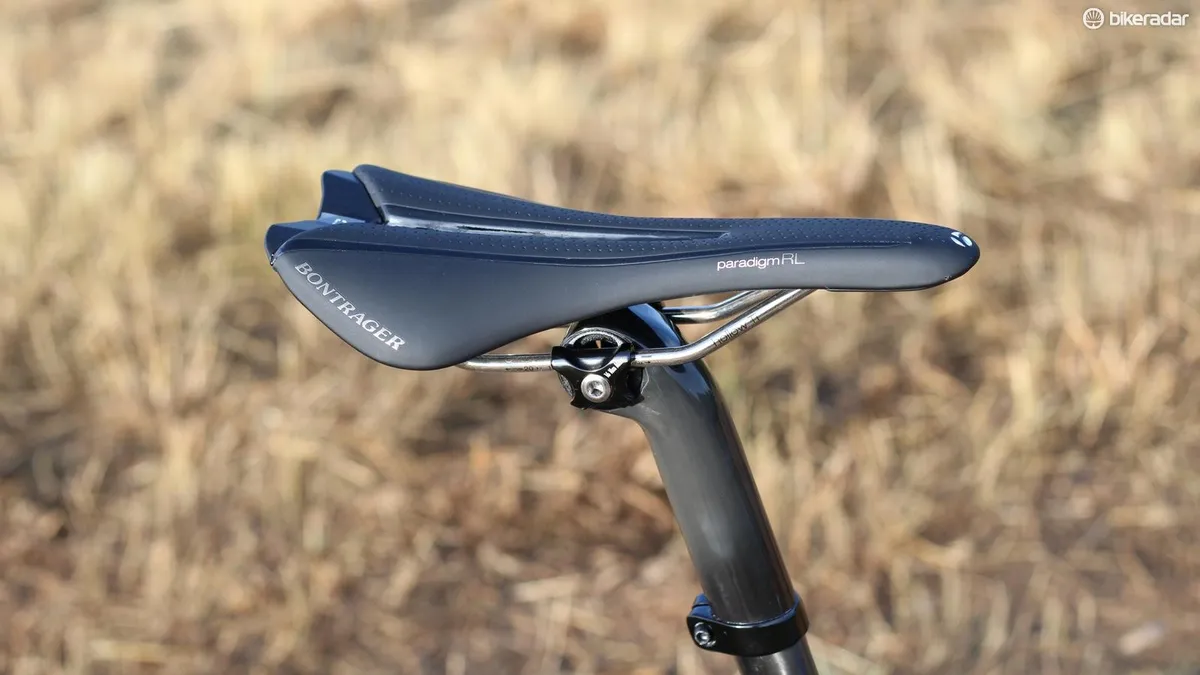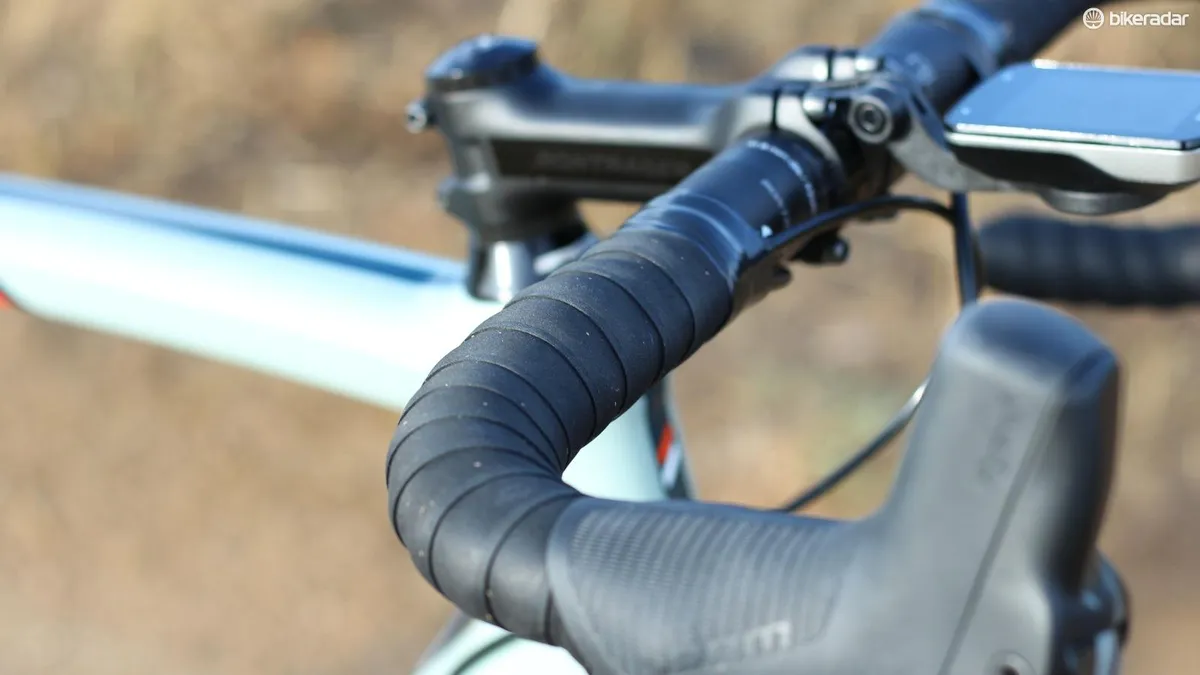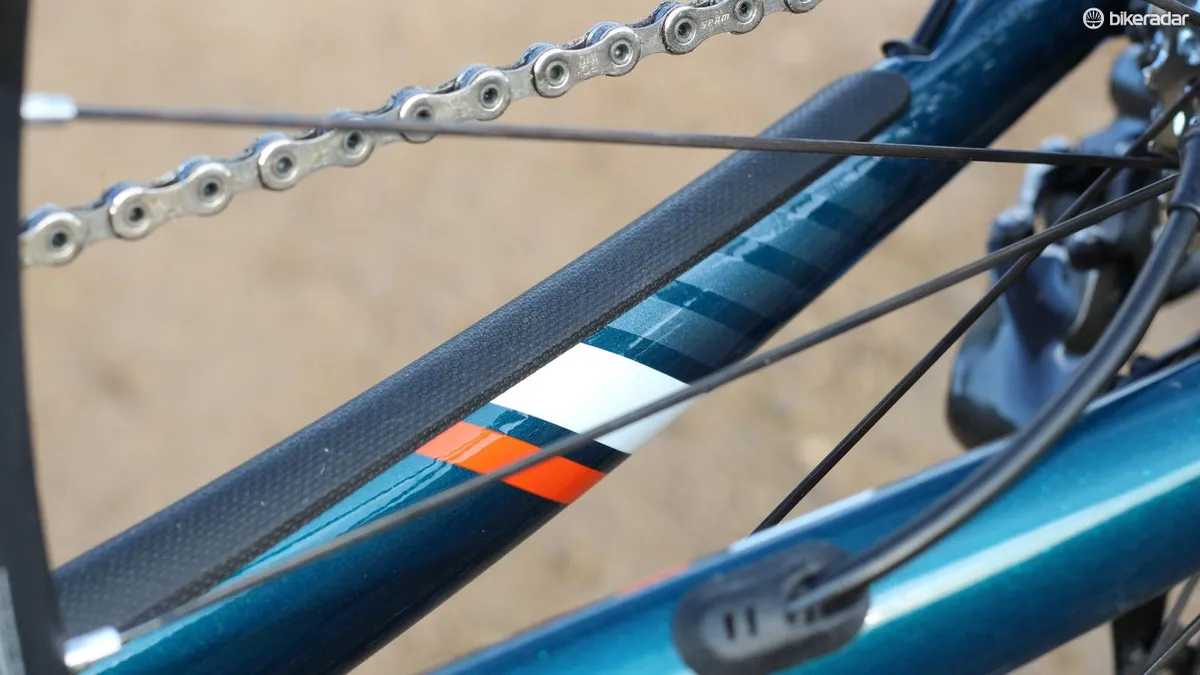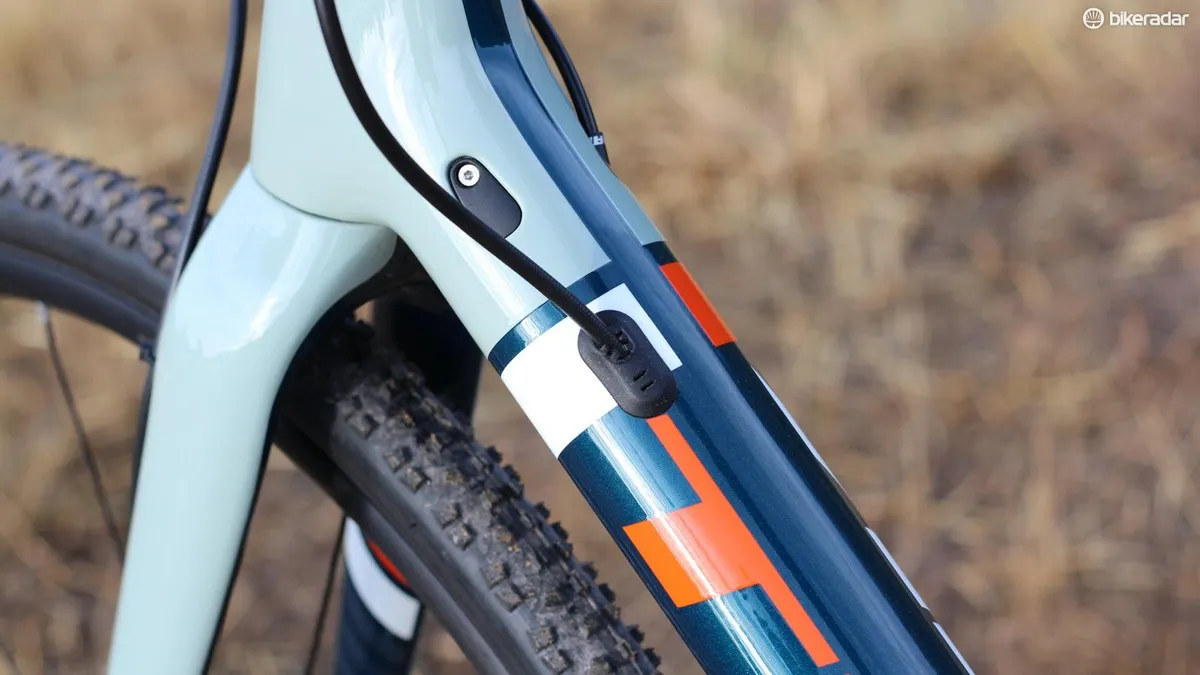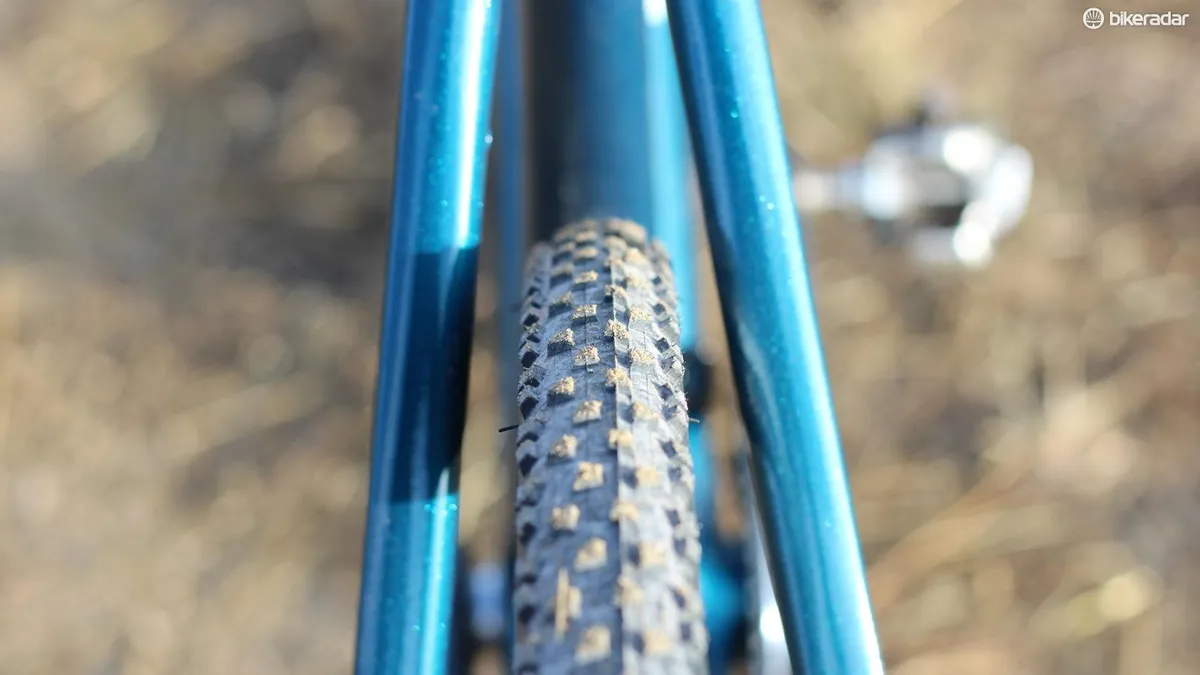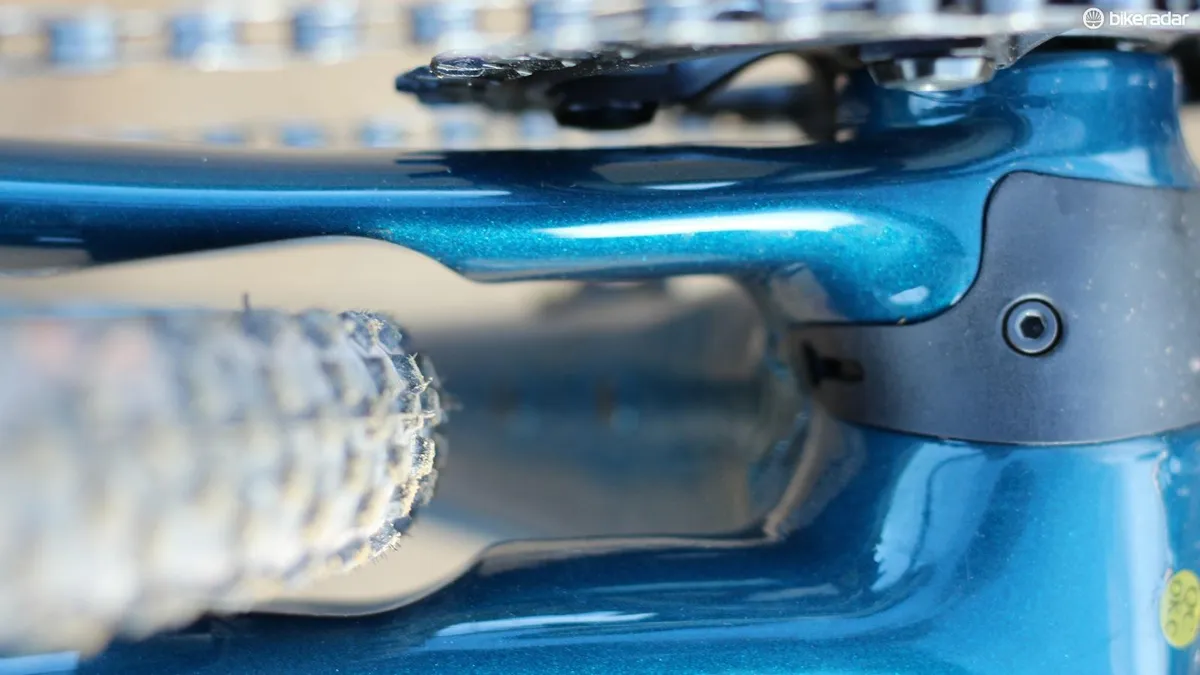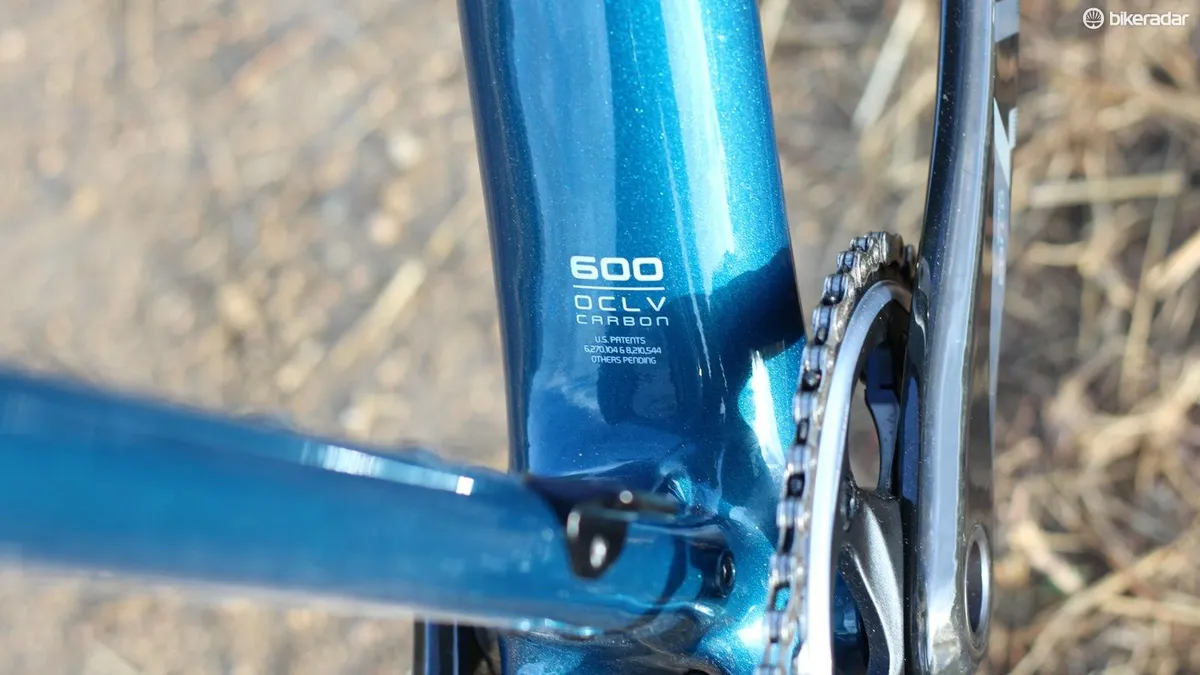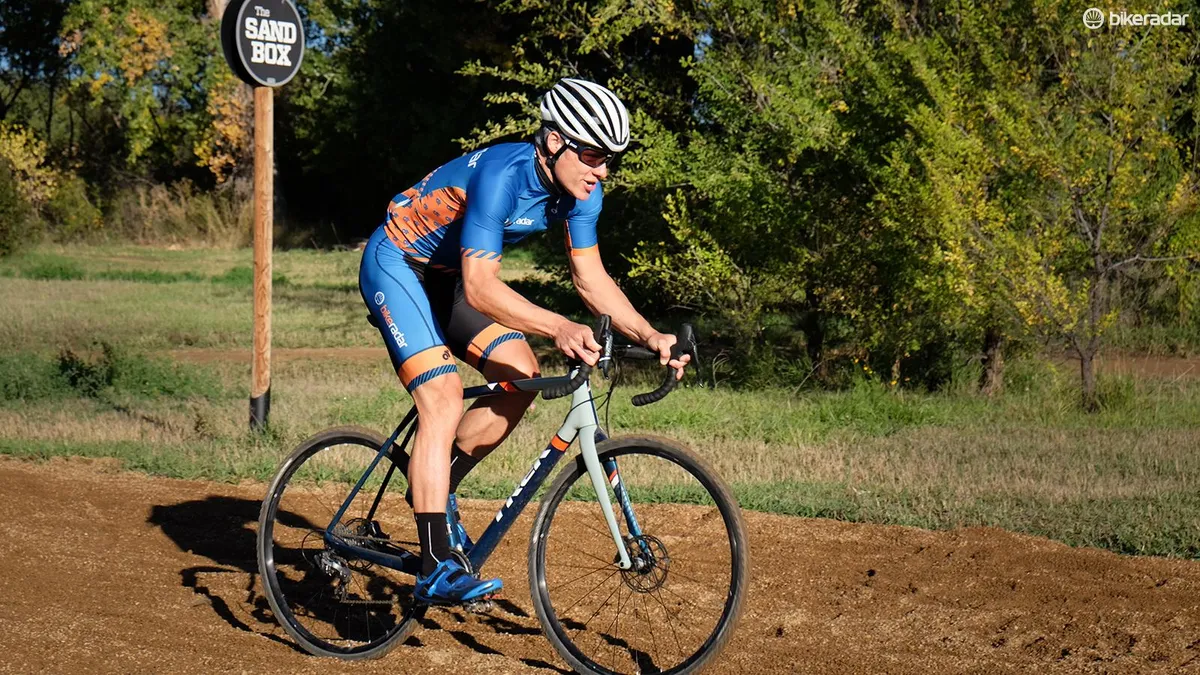The Trek Boone 7 Disc is our favorite cyclocross bike, for a few reasons. One, the flexing seat tube/seat mast lets you pedal seated through choppy courses and keep the rear tire engaged. Two, the low bottom bracket and stable front-end geometry combine for heaps of handling confidence. And three, Trek builds in a number of smart features, from the easily noted tubeless-ready wheels and integrated Garmin mount to the more subtle but valuable details like a broad top tube for handling and shouldering, smooth cage-boss plugs, integrated chain protector and semi-flattened handlebar tops.
- The best cyclocross bikes we've tested this year
- 7-day cyclocross training program for working stiffs
- How to get the perfect tire pressure for racing cyclocross
The Boone range and other bikes at this price
Trek’s carbon cyclocross bike comes in a less expensive Boone 5 Disc (a Shimano 105 2x drivetrain), an even more affordable Boone 7 cantilever bike for traditionalists, a Race Shop Limited Boone 7 (think Sven Nys) and this top-end Boone 7 Disc.
Like a number of other bikes at this pricepoint we’ve tested this season, the Boone 7 is a 1x race rig with SRAM Force CX1 drivetrain. The main benefit of the CX1 system is the clutch derailleur, which pulls the chain taut and greatly reduces chainslap compared to a standard derailleur.
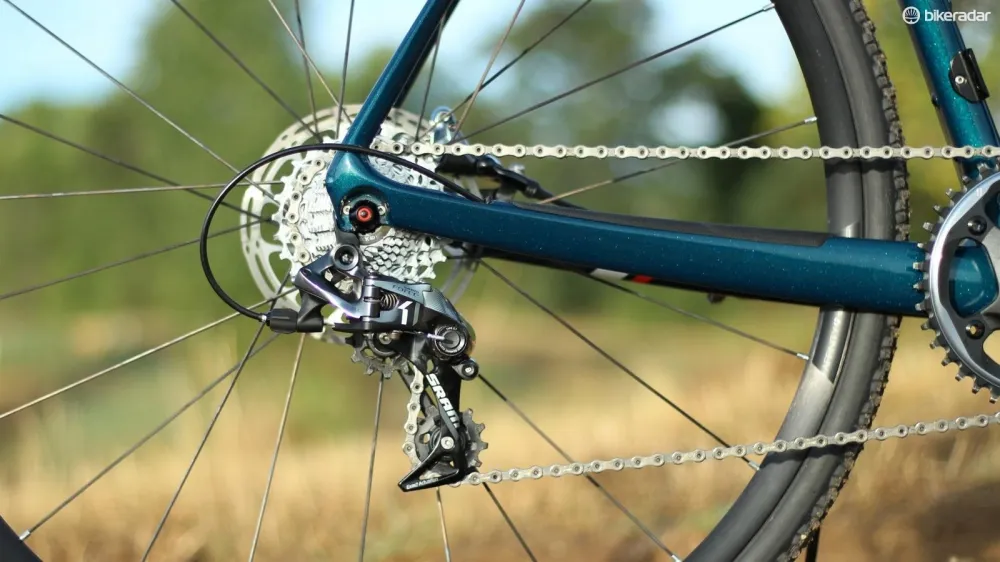
It also simplifies your shifting options; there’s no worrying about gear ratios or crosschaining — you just shift one lever up or down.
With a 40t ring, the 11-28t cassette is certainly adequate for most race scenarios. I’d still prefer to have an 11-32t, though, both for super-steep sections in races and just for a little more versatility in all-around riding.
Smooth is fast
It’s cliché but true: smoother is faster on a cyclocross bike. As a roadie with less-than-silky ’cross handling, I greatly appreciate how forgiving the Boone 7 is without feeling dull or inert.
The IsoSpeed Decoupler is Trek’s fancy name for the pivot point at the back end that allows the entire seat mast and seatpost to flex. It works. Well.
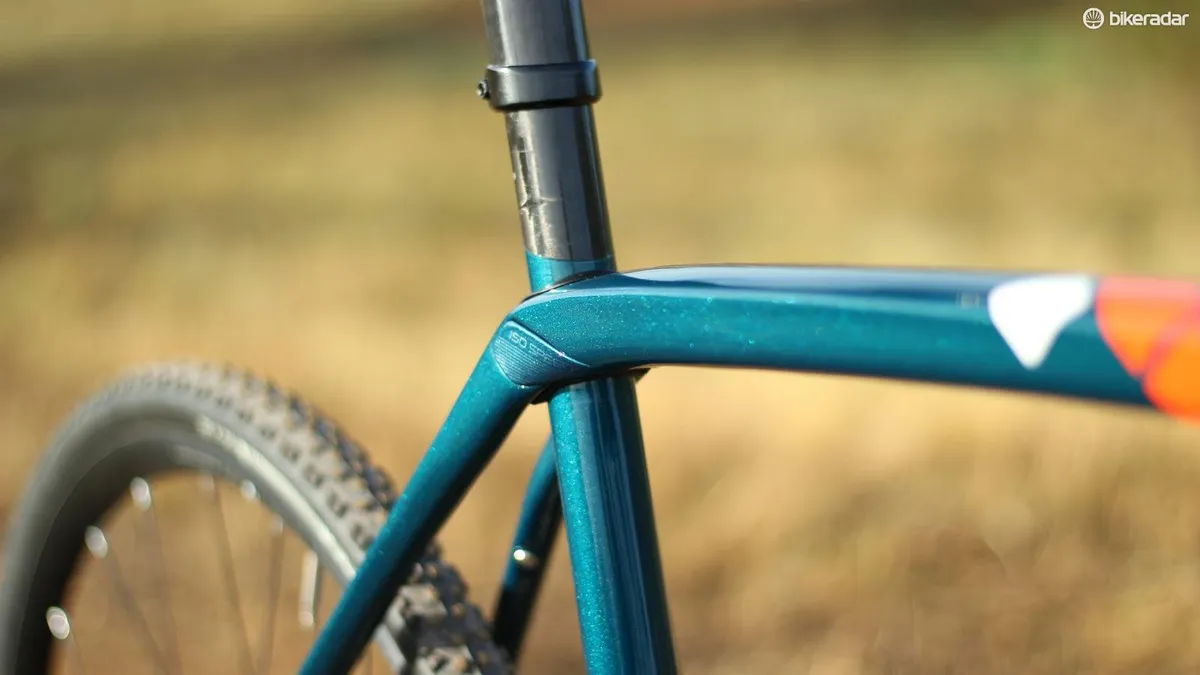
It’s difficult to overstate how drastically the IsoSpeed Decoupler flattens choppy sections of a course. While the tires are still doing the lion’s share of the work keeping traction, the frame’s ability to suspend your body keeps the engine better engaged.
The fork’s long, forward sweep takes the edge off bumps, but the tucked-back dropout placement keeps the geometry in check. All this, combined with a very low bottom bracket (68mm drop, about 5mm more than traditional), creates heaps of steering confidence.
While some old-school ’crosser might object to such a low bottom bracket, I love it. As I’m not bunnyhopping barriers or pedaling through hub-deep sand at Koksijde, I’ll gladly take more stability for a slight loss in ground clearance.
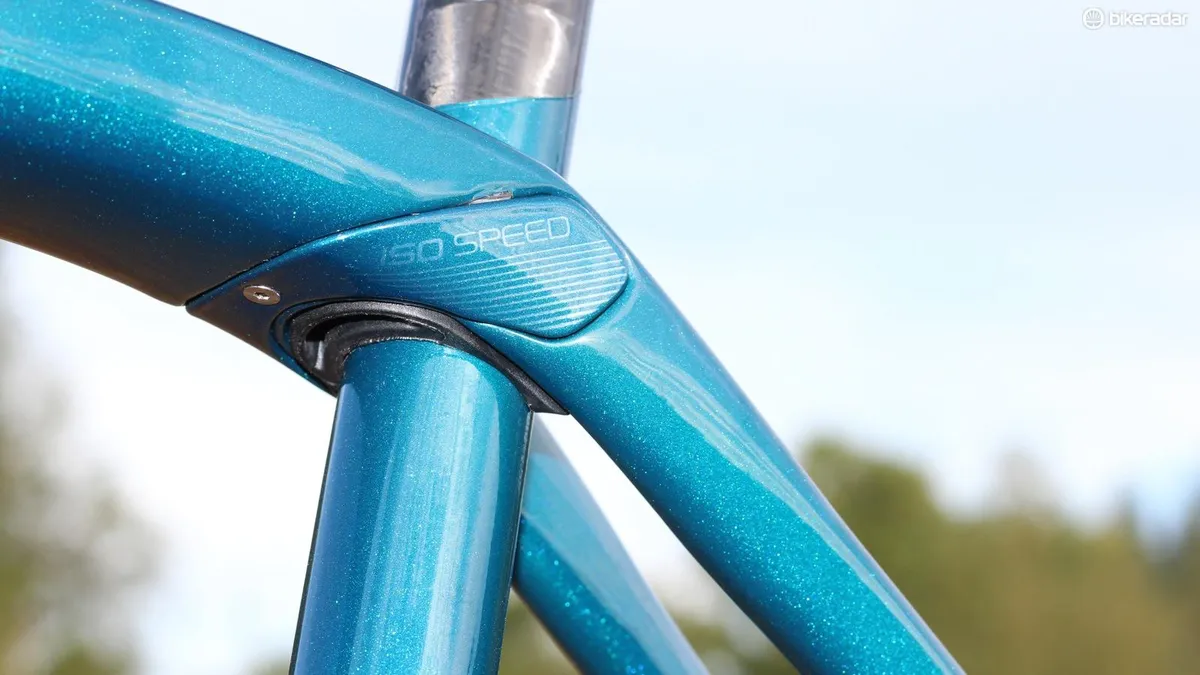
The angels in the details
Trek’s attention to detail on this bike is readily apparent, with smartly designed internal routing, an über-wide BB90 bottom bracket, an integrated chain keeper, a gel-padded chain protector, and a 15mm front thru-axle that ensures your disc won’t rub, no matter how many times you smash your front wheel against that barrier.
The top tube is very wide and flat — great for dismounts at speed with a hand on the top tube — and the bottle-cage holes comes sealed with smooth rubber plugs, which makes grabbing and shouldering the bike noticeably more comfortable.
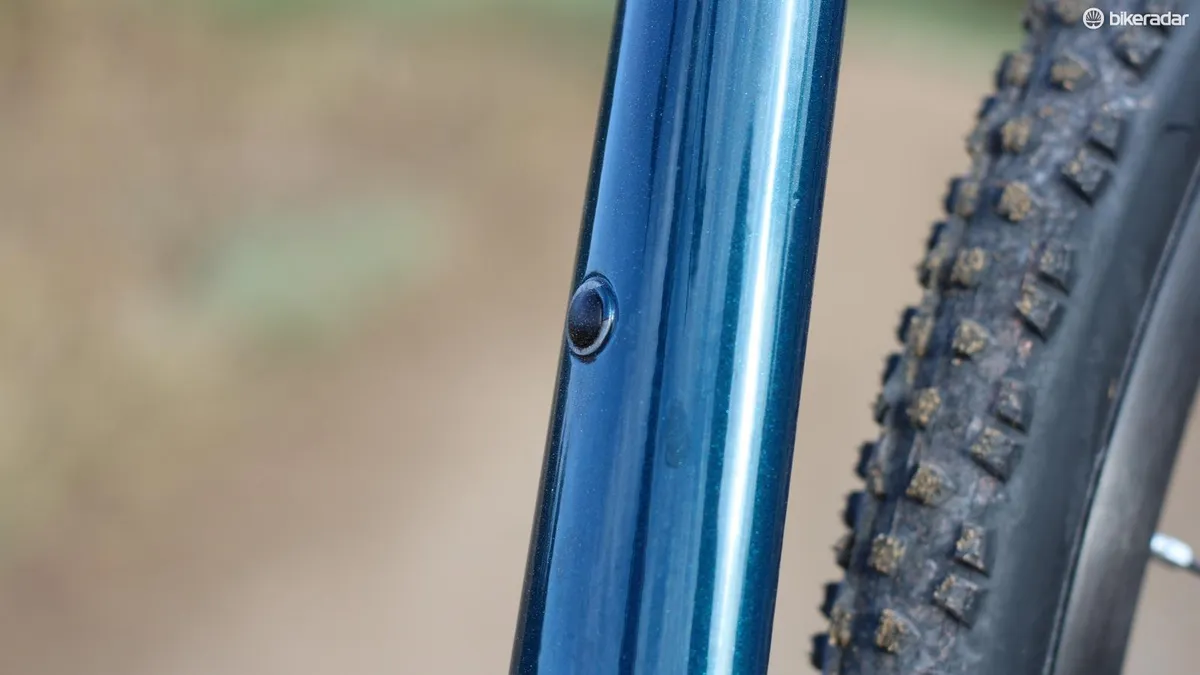
The cockpit is dialed. In addition to the cool integrated Garmin mount that clips onto the handlebar at the center of the stem, the handlebar itself has a great shape on the top, flattened enough to disperse pressure without looking or feeling weird in the hands.
The seatmast has a 10cm range of seat height. Our 56cm tester, for instance, has a 71-81cm saddle height range. With a little carbon paste the seatmast hasn’t budged, despite being subjected to scores of poorly executed remounts.
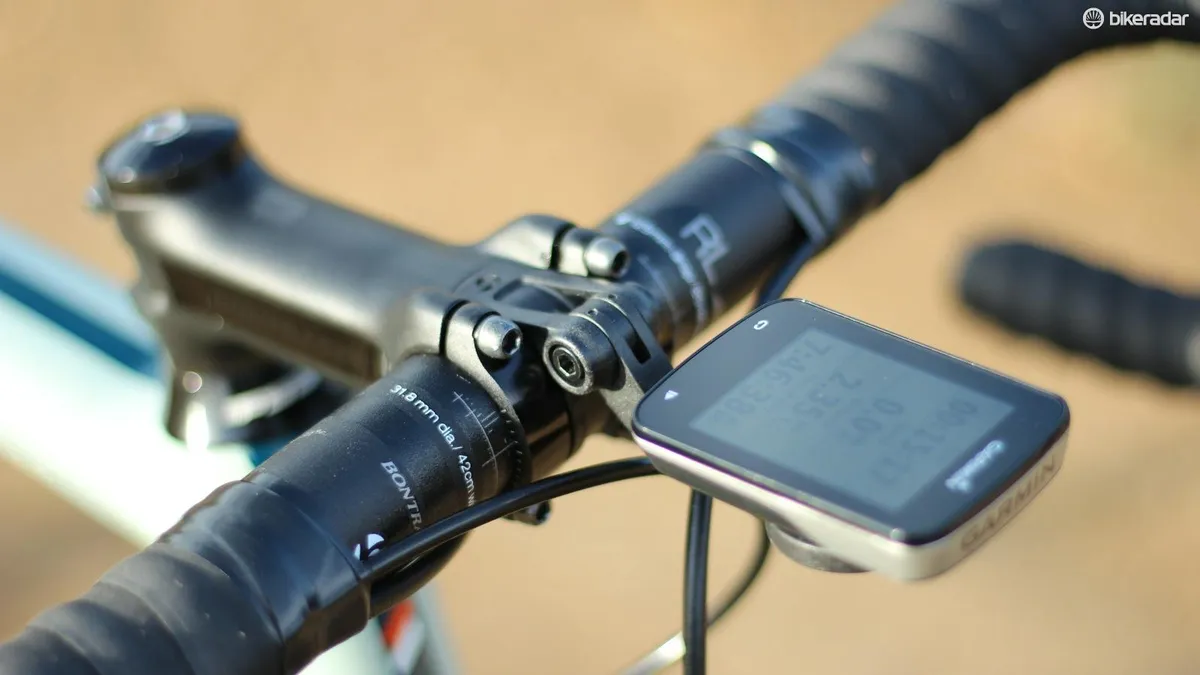
Should you second-guess your decision to go with a 1x drivetrain, the Boone 7 frameset has a mount and cable routing arrangement for a front derailleur.
Finally, the bike comes with tubeless-ready wheels. While early tubeless ’cross tires were more promise than delivery (burping in corners, during remounts, etc.), Bontrager has dialed in the formula with its Affinity wheel line.
And three little devils
Despite the tubeless wheels, Trek sells this bike with standard clincher tires, not Bontrager’s tubeless model. What’s up with that? So you’ll still need to pony up for tires and rim strips. Or at least I strongly recommend that you do, because with clinchers you have two lousy options: run overly high pressure or pinch flat often.
My test bike arrived new and sharp — and with a devilish click that took me some time to locate as coming from the front rim’s internal weld. Trek said that should a customer have such a problem, their local Trek dealer would take care of it.
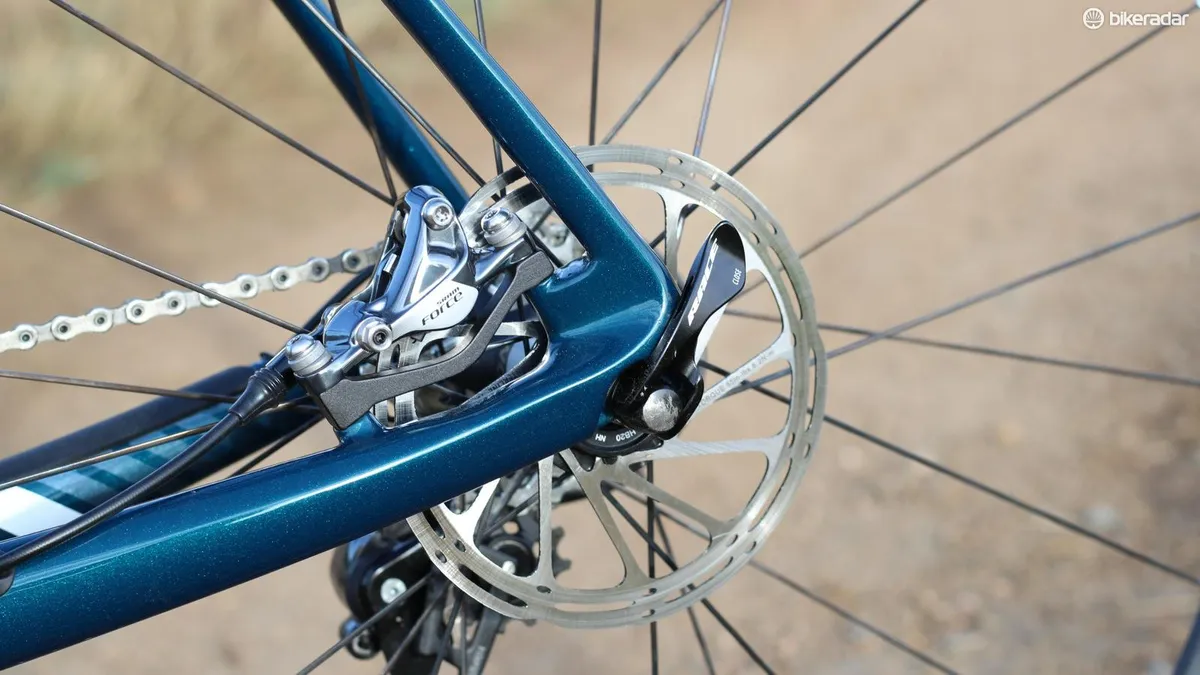
My only other gripe with the Boone 7 Disc is that the rear axle is an old-fashioned quick release. While I never experienced any movement or any other issue on this or the Boone 5 Disc I raced for most of last season, it’s just a little old school for 2016. Trek said it’s tested a few thru-axle prototypes but isn’t yet happy with the ride quality. I bet we’ll see thru-axles front and rear next season.
Bottom line: Boone’s the best
For our money, in testing a number of cyclocross bikes at a similar price, the Trek Boone 7 Disc is the best stock cyclocross bike out there right now. The clever fork and rear IsoSpeed make for smooth sailing, the huge BB90-anchored chassis loves to sprint out of corners, the tubeless wheels are almost ready to race (just add tires) and the bike’s details are dialed.
